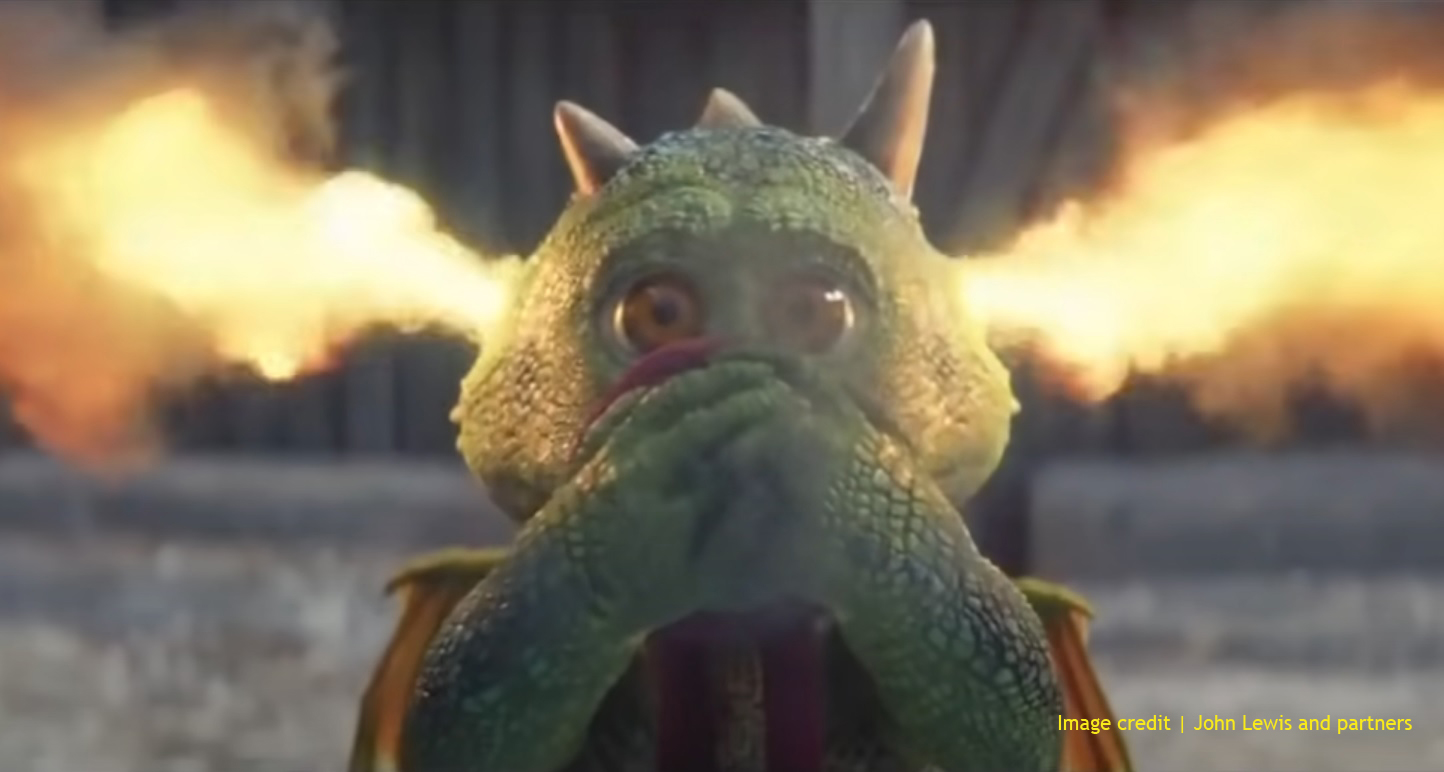Keeping your notes could be the simplest way to protect yourself from copyright infringement action, as has been highlighted in the recent high-profile copyright case between children’s author Fay Evans and department store giant John Lewis.
The case, which has just been decided following a High Court trial earlier this year, centred around Evans’ claim that the 2019 John Lewis Christmas advert had crossed the line in its similarities with her self-published 2017 book Fred the Fire-Sneezing Dragon.
In John Lewis’ advert, “Excitable Edgar” is seen being slowly outcast from a picturesque Christmas village after repeatedly losing control of his incendiary powers, melting snowmen and igniting Christmas trees, before being accepted. Meanwhile Fred’s abilities also see him struggle to fit in before his eventual redemption.
The law states that copyright in a work is infringed by a person who does, or authorises another to do, any of the acts restricted by the copyright without the direct or indirect license or consent of the copyright owner in relation to the work as a or substantially part of it.
But as in Zacaroli J in Sheeran v Chokri [2022], evidence should be supplied to show there was access to the claimant’s book in order to copy it, rather than imply a possibility of access – a precedent heavily relied upon by the defence.
It certainly helped John Lewis’ case that the central character of the advert is a mythical creature that has been adapted for a multitude of stories over centuries, but the real defence was that the concept was first pitched in 2016, with details of the full conceptualisation process being provided as evidence. This was acknowledged, by Mrs Justice Clarke who highlighted the “collaborative, creative, iterative approach” that went into the original advert outline and the final 2019 product.
In her dismissal of the claim, Mrs Justice Clarke declared that the likelihood the department store would have had access to the story “appears to be so remote as to be almost entirely theoretical” – given only 914 copies of the book were sold, mostly through school visits.
Despite the fact that the advert was first conceived prior to the publication of the book, Evans’ legal team argued that aspects of Edgar’s story were not featured in the original pitch and had breached her copyright. This was again countered by the defence through a research schedule of dragon themed books to identify similarities – with Evans’ book not being identified in this initial search.
Megan Jefferies from the Thrings Intellectual Property Team said: “The fact that John Lewis was able to demonstrate the timeline of their own design process with sufficient evidence was a strong defence in this case and shows the importance of keeping track of your ideas for future reference.
“We would actively encourage individuals and businesses wishing to avoid their IP being infringed to seek sound legal advice on how best to protect themselves but either way, from the outset, keep track of an idea at every step of the way. Even a scribble on the back of a napkin is enough to demonstrate your independent process and by simply emailing yourself a copy you can ensure it comes with a timestamp to prove you did it when you say you did.”
Thrings’ Intellectual Property Team is experienced in safeguarding brands and trademarks from infringement and has successfully advised multinational organisations on a range of matters from IP disputes, including copyright infringement, and trademark registration to managing diverse portfolios and worldwide expansions. To find out how they can help protect your IP rights, click here.


